How To Add Pockets To A Jacket
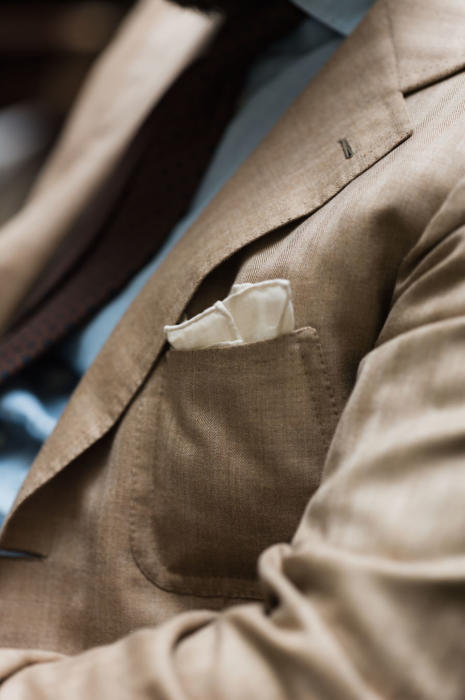
As ever in the lovely, international, interactive community that is Permanent Mode, this article was spurred by a reader.
He asked about the advisable configuration of jacket pockets on a suit he was ordering, and I realised we hadn't covered it in our Guide to Suit Way. So hither nosotros go: everything you wanted to know, and probably some things y'all didn't, on jacket pockets.
Practise inquire questions on anything I've missed out, in the comments below.
As with the other manufactures in this Guide, and indeed all Guides, it helps build it into a really comprehensive resource.
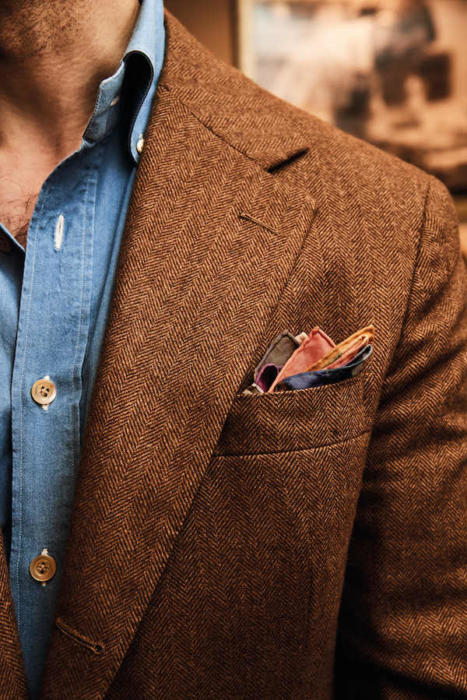
Breast pocket
Permit's start with an easy ane. The outbreast pocket, which is the one sitting on the left of your chest on the outside of the jacket (hence outbreast, not inbreast) is almost always a welt.
This ways in that location is an opening, with a strip of cloth just below it, reinforcing it (shown above).
The alternative is a patch pocket, where a piece of cloth is simply laid on tiptop of the jacket, with the top open. This is not very common every bit a breast pocket, because it stands out much more than than a hip pocket, and so makes the jacket look much more than casual.
As a result, I wouldn't recommend having it on a suit, just a sports jacket.
And, I would but do so with a Neapolitan maker, personally. Nigh other tailors – particularly the English – take a tendency to cut larger, squarer patch pockets, which are not that elegant and are ameliorate suited to bodily sporting jackets.

I have had dinky Neapolitan patch pockets on the breast of some sports jackets – as shown at the acme of this piece on my Caliendo jacket. But even there, I more normally have a welt.
That welt can likewise vary in shape and direction. Most are direct, and angled slightly up towards the shoulder. This creates an impression of breadth.
Some tailors though, especially Neapolitans, similar to curve that pocket, making it scooped, perhaps a trivial similar a boat. They call it a 'barchetta' as a result (shown above). It can be an attractive fiddling touch on.
Other permutations of the outbreast pocket include flaps, bellows and jetted. I'd recommend against all of them though, unless you have a strong preference, or they are also on a functional jacket, similar a piece for hunting or walking.
Otherwise they tend to look gimmicky.
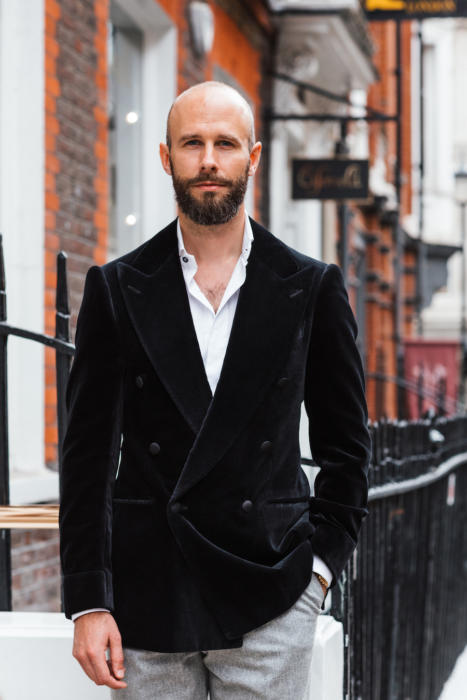
Hip pockets
The hip pockets on a jacket are where there is nearly pick.
There are by and large 3 options here: jetted, flapped or patched, in descending order of formality.
As is the case elsewhere on a suit, that formality is adamant by how much bulk at that place is – how much the pocket gets in the style of the smooth run of the textile. It's the same principle that makes checks or textured material less formal too.
Black tie, being the smartest thing you are likely to clothing, should always accept jetted pockets (above). A smart suit should normally have flapped pockets. And a very coincidental sports jacket will usually look improve with patches.
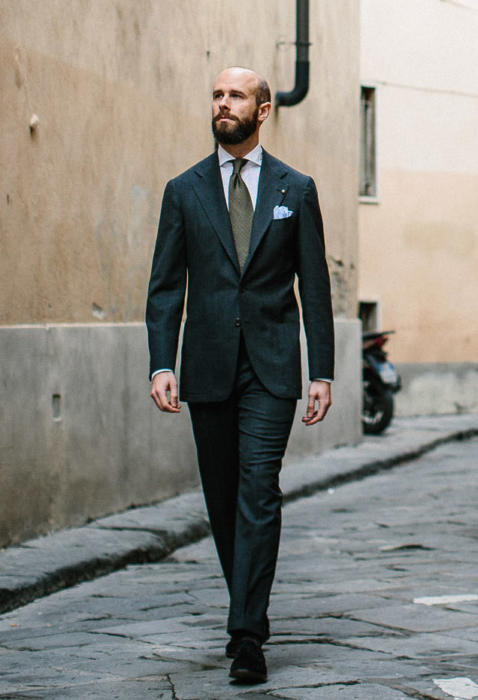
But there is leeway with the suit and the jacket.
For example, my Ciardi suit (above) is formal in colour and lack of pattern; but information technology is informal in its soft Neapolitan make, and details similar pick stitching around the edges. The textile is as well a high-twist wool, not a sleek worsted.
Its formality, equally a effect, is middling. Flapped pockets would take been the safe selection, just patches are fine besides. And those patches make it a niggling more coincidental.
A patch outbreast pocket, withal, would have looked odd.
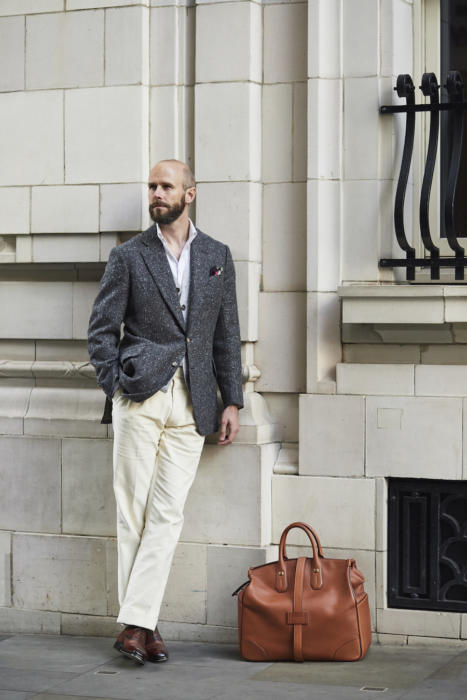
In full general I want to make my tailoring more coincidental, rather than smarter, which is why and so many of my suits and jackets have patch pockets.
Only I would e'er take flapped pockets on an English-cut adapt, and my more structured sports jackets also often accept flaps.
For example with my donegal jacket from Steven Hitchcock (to a higher place), I wanted it to be a little smarter than yous would otherwise expect from tweed, hence the dark colour and the flaps.
English tailors as well accept a tendency towards those large, square patch pockets when asked to put them on the hips. Partly because they were generally deputed for things like hunting jackets in the past.
Have a look at the size of the patch pockets on the hunting jacket fabricated for me by Huntsman, below.
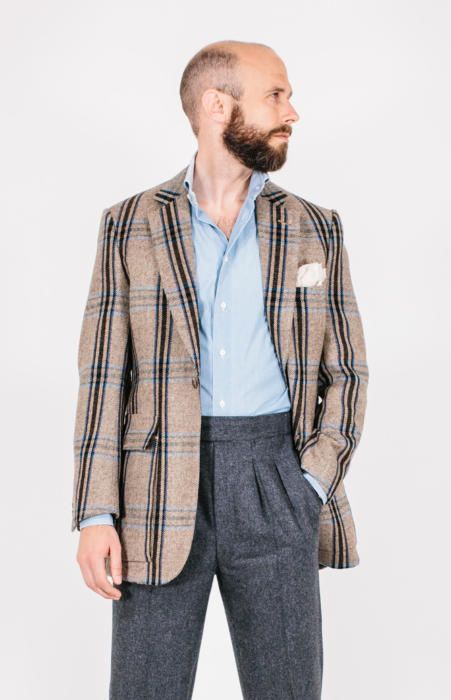
As well, remember fashion has a big role to play here, as it does in any questions of conform mode.
Patch pockets accept become fashionable in the past 20 years, forth with a lot of things unstructured and Neapolitan. That might change in some other 10 years. Indeed, jetted pockets are seen more commonly at present – perhaps because the suits that are being bought are frequently for the evening, or for dressing up in other ways.
And remember that a well-made flap pocket tin as well have its flap tucked away, making it look only like a jetted one.
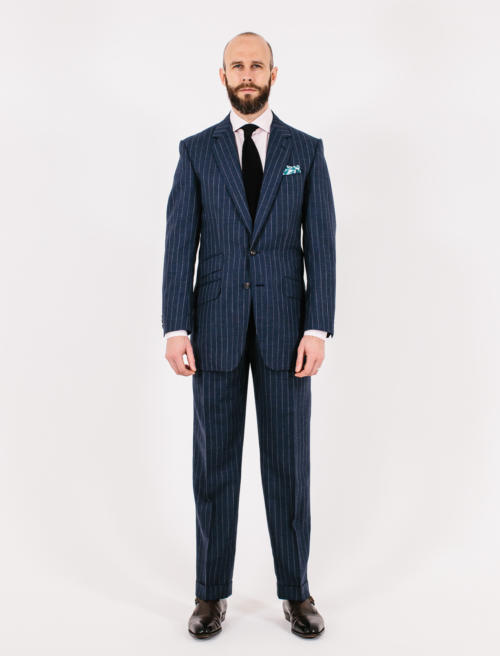
Other, more small options are slanted pockets – sometimes called hacking pockets – and ticket pockets (shown above).
Slanted pockets originated on riding jackets, where the bending made them easier to access. They are too supposed to exist thinning, drawing the heart away from the waist.
I've had them occasionally (eg on that Hitchcock jacket), and think they usually wait better on English language tailoring. But I don't think they make a big visual impact; if y'all like them, go ahead. Just not on the almost casual jackets.
I feel the same fashion about ticket pockets. The modest, additional pocket on the waist seemed very exciting and nifty when I was first getting into tailoring. But today it simply seems unnecessary.
Have it if you want, just on smarter commissions. And don't worry well-nigh it too much every bit a decision – certainly compared to patch vs flap hip pockets.
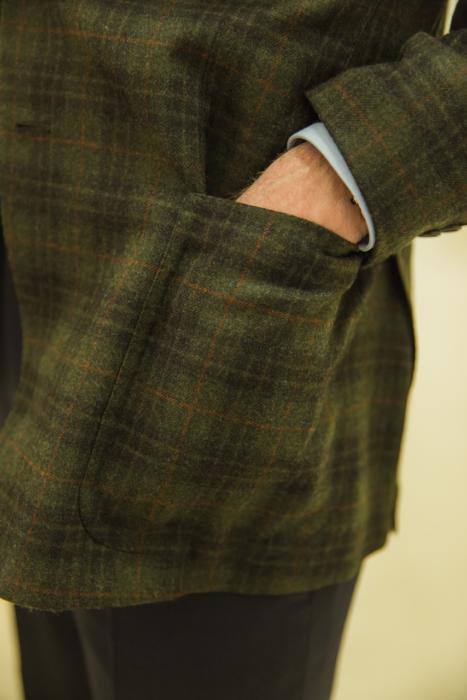
What else? A subconscious change pocket within the hip pocket can be useful, unless you carry your change elsewhere. This is commonly made of the same cloth as the lining.
Edge stitching on pockets can exist prissy, but the more you accept, and the more visible it is, the more casual information technology makes the way. Bear that in heed before having ii rows of information technology. (Higher up, from Solito.)
Patch pockets can accept bar tacks on the top corners, which is a harmless piece of adornment – simply usually not actually required.
Flaps can exist both slanted and curved, as on my Rubinacci beneath.
The welt of an outbreast pocket tin also be slimmer, or more than angled. Only in general anything unusual here is a bad idea. It's too shut to the confront and risks beingness a lark.
And there are far more than variations and idiosyncrasies with overcoats, such as patches with flaps (below), postbox pockets and so on. But they deserve to exist covered separately.
Now permit me know everything else I've forgotten.
[All images shown are from Permanent Style commissions – if you want to know which articles they are from, practise besides inquire in the comments]
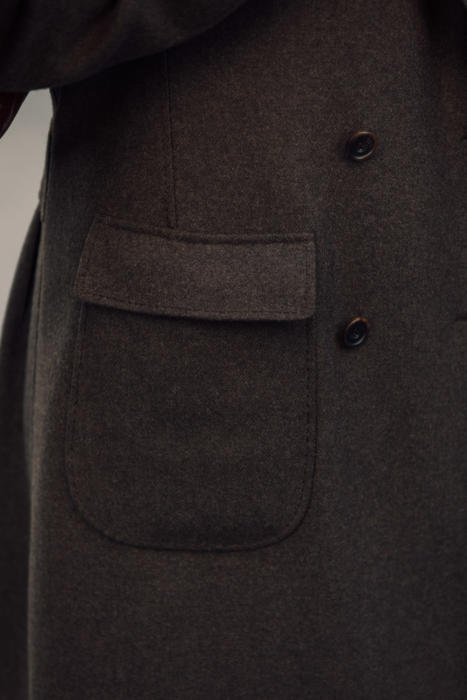
Source: https://www.permanentstyle.com/2020/07/the-guide-to-jacket-pockets.html

0 Response to "How To Add Pockets To A Jacket"
Post a Comment